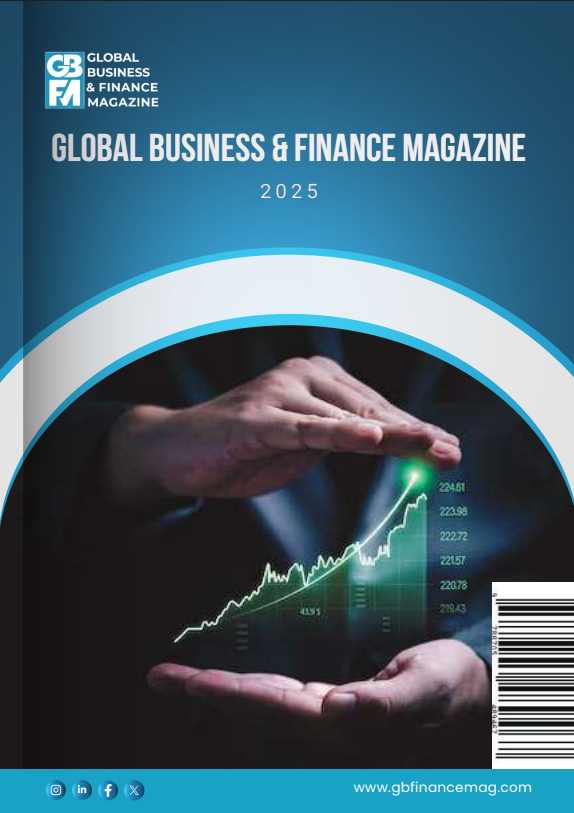A recent paper which has gathered significant attention estimates a 45% tariff equivalent of intra-EU border costs. This column argues that this estimate is likely too high and depends on the particular dataset used and specific estimation choices. Therefore, it also vastly overstates the barriers that are akin to tariffs and could be lowered as a result of European Commission policy decisions. Instead, it argues that there are more urgent reforms with larger potential benefits, such as boosting EU innovation capacity and R&D spending.
A single estimate from a research paper – the 45% tariff equivalent of intra-EU border costs – has improbably risen to shape political rhetoric at the highest levels in Europe. Earlier this year, Mario had cited the same IMF study (Adilbish et al. 2025) to regret that the EU market does not offer the integration needed to reach US-level scale economies and growth. The extraordinary political appeal of the 45% is easier to understand within the current Transatlantic trade policy. Low-tariff access to the US has been replaced by historically high 15% tariffs on all goods and much higher tariffs on metals. As a consequence, economies such as the EU and Canada that formerly viewed the US as a large, stable market for their goods are recalibrating. The idea that the EU and Canada could dramatically expand internal trade flows as a partial replacement for lost opportunities in the US is appealing since internal barriers can potentially be removed through internal policy.
Estimates of high inter-EU-member and inter-provincial border effects in Canada are seen as offering the potential for deepening the internal market. Draghi and others have argued that policy reforms could reduce these border effects by substantial amounts. International institutions have conducted a series of studies of EU border effects: the IMF study by Adilbish et al. (2025), a Danish National Bank working paper by Hammershøj Bentsen et al. (2025), and an ECB report by Airaudo et al. (2025). Their results have been interpreted as evidence that the Single Market is not very integrated and seen as implying that there is low-hanging fruit in an EU competitiveness strategy.
The IMF has also published estimates of the tariff equivalent of barriers imposed by Canada’s provinces on each other. Alvarez et al. (2019) report a 19% tariff equivalent of non-geographic barriers for goods, averaging over sectors and provinces. Without citing a particular estimate of interprovincial barriers, the Canadian prime minister’s remarks imply he believes they are sizeable:
“We can more than offset the effects of any U.S. tariffs by eliminating internal trade barriers alone.”
Mark Carney
Confronted by an external policymaker who cannot be controlled, it is natural and praiseworthy to seek out internal reforms of policies that the EU and Canada do have control over. Here we caution against an unduly optimistic view of the potential of such reforms. First, we point to important issues in the data and estimation methods that underlie the 45% intra-EU border estimate. Second, we argue that, in Europe at least, most of the low-hanging fruit has already been targeted by decades of internal market liberalisation efforts. The remaining sources of border effects are likely to prove resistant to reforms.
Different data sets, different results
There are several ways to assess a given economic effect across different estimates in the literature. The one chosen by Hammershøj Bentsen et al. (2025), for instance, is to pick the preferred estimate in a set of papers and report them. The risk with such an approach to border effects is that many things vary across those contributions: the source and aggregate level of trade flows, the method for computing internal trade, the set of covariates, the chosen distance variable, the time period, the econometric estimator, the trade elasticity, are all choices that vary across studies. It is then hard to systematically isolate which factor is most important in obtaining different results.
We offer an alternative approach: Instead of comparing various estimates, we use the different source datasets used by the cited papers and apply a large set of variations in estimation techniques on those datasets to provide rigorous deciphering of the factors that matter in the quantification of EU market integration. There is a set of maintained methods over our econometric specifications: First, our gravity regressions all use Poisson Pseudo Maximum Likelihood (PPML) using aggregate trade on the sample of EU members. Second, the gravity covariates are distance, a dummy for common language, and a dummy for cross-border trade, separating international from internal trade. Third, we compute the Ad-Valorem Equivalent (AVE) using a tariff elasticity of −5. This is the benchmark set of assumptions in our original paper comparing levels of EU and US integration (Head and Mayer 2021), and in most of the recent contributions quoted above.
We work with four different datasets. The first one is the Trade In Value Added (TiVA) dataset constructed by the OECD. This is the dataset used by Adilbish et al. (2025) in their section 3.1. TiVA provides industry-level data. One needs to make assumptions about which industries produce and trade goods. On page 11, Adilbish et al. (2025) mention taking ‘aggregate goods sector data’, which we interpret as being Agriculture, Forestry, Fishing, Mining, and Manufacturing (both for final and intermediate use). The second one is the third release of the International Trade and Production Database for Estimation (ITPD-E) constructed by the US International Trade Commission (USITC). Again we sum all tradable industries. The trade and production dataset created by CEPII is our third dataset, similar in objectives as the USITC dataset. It provides comparable data for output and bilateral trade for a number of industries and years. The coverage is less detailed than USITC, since it is restricted to manufacturing, but runs longer in time. The internal trade flows are similarly computed as output value minus total exports. After inquiring with the authors, this turns out to be the data used by Airaudo et al. (2025), which also finds large border effects inside the EU. The last dataset is the one we developed for Head and Mayer (2021).
Table 1 demonstrates that details of estimation matter a great deal for determining the tariff equivalent of borders within Europe. Here we consider three specific issues: the measure of distance, the specification of the dependent variable, and the selected trade dataset. Column (1) row 1 obtains an ad-valorem equivalent of 32% from the TiVA data, which is close to the AVE of 30% reported at the bottom of page 11 in Adilbish et al. (2025). Both estimates are considerably lower than the ‘headline’ result of that paper (quoted in The Economist and by prominent political leaders) of 44%. This is because of a fourth issue we will not be investigating here: aggregation of sectoral level results. Because we are interested in reconciling results with Head and Mayer (2021), our focus is on AVE estimates obtained from aggregated bilateral trade.
The TiVA-based border effect in column (1) is more than twice as large as the one obtained by applying the same specification to the USITC data. There is no result from Head and Mayer (2021) because we did not have 2020 data at the time we wrote the paper. Column (2) takes a small step towards the Head and Mayer (2021) main specification, by using the pre-2022 CEPII distances. This increases border AVEs in the TiVA and USITC data, but the TiVA AVE is still twice as large as its USITC counterpart.
The next step, shown in column (3) changes the specification of the dependent variable to be the exporter’s share of the importer’s total expenditure. This specification is robust PPML on flows, but puts less emphasis on the large flows and gives results that more closely resemble the linear in logs specification. The share results exhibit slightly higher AVE for TiVA but lower AVE for USITC so the discrepancy widens. Column (4) goes back to 2017 data to allow comparison with result in the Head and Mayer (2021) online appendix. The 2017 estimates in column (4) for TiVA and USITC differ by just one to two percentage points from the 2020 estimates in column (3). Evidently, COVID was everywhere in 2020 — except in the gravity regressions.
The Head and Mayer (2021) row of column (4) replicates the main text AVE of the EU border, which Adilbish et al. (2025) and Hammershøj Bentsen et al. (2025) refer to as an outlier. It is indeed much smaller than the corresponding estimate from TiVA data, 46%. The gap with the USITC results is much smaller, but this estimate remains on the small side compared to the others reported in this table.
The next demonstration of the sensitivity of border effect estimates replaces CES mean distances with arithmetic averages. Comparing the average distance results shown in column (5) with the CES distances used in column (4), we see that border effects jump up across all the trade data sets. As CES-mean internal distances are smaller than arithmetic means, but international distances are about the same, there is a near-mechanical increase in the estimated border effect.
Table 1 How data and specification affect border ad-valorem equivalent estimates


Note: All Columns use PPML regressions. a) AVE := 100 × [exp(coefficient/ϵ) − 1] where ϵ = −5 is the trade elasticity. b) Average distances are population-weighted arithmetic means. CES distances are population-weighted generalised means. CES† are CEPII’s 2022 updated distances. Hinz are lights-based distances available at https://julianhinz.com/data-code/gravity_distances/. c) The dependent variable ‘flow’ is Xin, whereas the ‘share’ form is Xin/Pi Xin (i is exporter, n is importer). d) SCI (https://data.humdata.org/dataset/social-connectedness-index)
The distances in the CEPII gravity database are constructed using information on cities within each country. A potential concern for measurement of internal distance is that there might not be enough cities in each country to compute reliable intra-national distances (Hungary and Slovakia have just one city in the database and Slovenia has none). Hinz (2017) has created a much more detailed database by exploiting satellite imagery of lights. We use his measures of harmonic distances between and within countries in Column (6). This yields small differences in the AVEs relative to those shown in Column (4). This suggests that while using granular internal distance measures is preferable, it is probably not a quantitatively important factor in determining border AVEs.
Column (7) adds an additional control variable to the specification. Up until this column, each regression controlled for distance and a common language. Now we add a new measure of social connections derived from analysis of Facebook friends data. Bailey et al. (2021) showed that this measure is an important determinant of trade. It is also negatively correlated with borders and distance, as we show in Figure 2. While we would not argue that Facebook connections are themselves trade-creating, we believe they are likely to be a good proxy for business and social connections more broadly that are relevant for trade. The results bear this out. After controlling for log of the social connections index, the AVE of the border is much smaller with all data sets, and not even positive with USITC and Head and Mayer (2021) data sets.
The evidence in Table 1 is based on the method developed in Wei (1996) and first applied to trade within Europe by Head and Mayer (2000). Using national data imposes two inherently problematic steps: measurement of both distance to self and trade with self. The original method of computing border effects, introduced by McCallum (1995) dispenses with both problems by making use of province-province and state-province data. Sub-national data on inter-regional trade is available in the EU using surveys of rail and road transport of goods. Two papers exploit this data to estimate border effects that we can convert into AVEs and compare with the results from the previous subsection.
Bailey et al. (2021) estimate ‘same-country’ effects (the negative of the border effect) using rail freight tonnage. Santamaria et al. (2021) construct the imputed value of road-transported goods within Europe. The Bailey et al. (2021) estimates imply AVEs of the border of 56% when controlling only for distance, 26% after controlling for social connections, and just 10.4% when they control for non-parametrically. Meanwhile Santamaria et al. (2023) obtain an AVE of 45% for different-language/different-currency dyads. This falls slightly to 41% for same-language/same-currency dyads. Santamaria et al. (2021) use the same data without imposing a parametric form for distance. Converting their result, which they express as a trade ratio, to a tariff-equivalent, we obtain 42%. Restricting the sample to borders created since 1910 further decreases the AVE of EU borders to 28%. Using region-to-region transport data appears to lead to higher estimated border effects than the international gravity estimates from Table 1 (except for the TIVA results). The rail and road results are somewhat discordant in terms of the impact of controlling for distance non-parametrically. Santamaria et al. (2021) find that road, rail, and maritime transport account for 49%, 11%, and 30% of all intra-EU trade in tonne-km terms.
What barriers underlie estimated border effects?
One result on which all scholarly contributions using gravity agree is the impressive extent of the trade integration achieved in Europe over time. Mayer et al. (2019), Heiland et al. (2020), and Fontagne and Yotov (2025) are recent examples of work using structural gravity in a traditional way to show that the trade within the EU has made much more progress than in the rest of the world.
Figure 1 The evolution of EU15 integration: Four datasets


The border effect approach to this question focuses on the relative change of internal trade versus trade with other EU partners (separating it from the interesting but different question of trade with rest-of-world countries). Figure 1 uses our four datasets to estimate the ad-valorem equivalent of the effect of those borders over time. These regressions restrict the sample to the 15 countries as of the 1995 enlargement. The dataset of Head and Mayer (2021) was designed to measure those border effects since the start of the European integration. TiVA starts in 1995, USITC starts in the mid-1980s, but has quite a lot of missing data for self-trade before 1996 (several countries only have a few agricultural flows reported before that). TP-CEPII goes back as long as Head and Mayer (2021) but only covers manufacturing. The four datasets agree that the impact of borders has gone down over time. As expected from results shown in our cross-sectional analysis of Table 1, TiVA estimates much larger border impediments, broadly similar today to the level estimated with the Head and Mayer (2021) dataset for the 1970s. USITC stands in the middle in the mid-1990s but converges to the lower estimates around 10% in the recent years.
Another visible pattern is that EU barriers stop declining around 2010. One interpretation is that national policies were implemented in recent years resulting in a deterioration of Single Market objectives. An alternative interpretation is that once most hurdles to trade have been lifted, the remaining obstacles associated with national borders have to do with home bias in private or public consumption. García-Santana and Santamaria (2024) use micro-level public procurement data to show that public sector purchases are indeed still home-biased in Europe. While the Single Market programme attempted to reduce home bias in government purchases, the full elimination of consumer biases would require cultural changes that are neither feasible nor desirable.
Two large components of private-sector biases are social network effects and taste differences. Head and Mayer (2013) argued that both of these mechanisms played important roles in explaining why borders (and distance) have larger effects on trade than the observable costs (such as tariffs) would predict. The two mechanisms share the premise that countries were historically more isolated from each other or in outright conflict. This led to low bilateral business network connections which created lack of information about trading opportunities and whom to trust as a trade partner. Historical isolation also led to the cultural evolution of home-variety biased preferences. Since that paper was written new evidence has emerged to support these hypotheses.
Bailey et al. (2021) brought forward new data on social connections thanks to data provided by Facebook. In Table 1 we showed that controlling for Facebook-derived measures of social connectivity eliminates border effects for three of the four data sets. We also show the effects of higher social connectivity within countries by computing the border effect for connections. Figure 2 graphs their connectedness index for EU NUTS2 regions. We separate dyads into three groups. The blue triangles represent friendship within each region. Orange circles show connections between regions in the same country and grey squares show connections that span national borders. Intra-regional connectedness is very high, but it does not appear to decline with average intra-regional distances. We therefore discard the blue triangles when computing border effects. The two black lines are the OLS predictions for dyads with distances less than 5,000km. The clusters of points with distances greater than 5000km are main overseas islands (e.g. Martinique, British Virgin Islands). We compute the average ratio of predicted connections for the common support of 39 to 2163km as 18. That is, the average person has nearly twenty times more Facebook friends in their home country than they do in a same-distance foreign region. Bailey et al. (2021) estimate that a one log point increase in social connection increases trade by 0.3 to 0.5 log points. Thus, a log(18) point increase in connections is tantamount to avoiding a 19 to 34% tariff. The implication is that most, or all, of the non-tariff barrier between EU countries can be explained by border effects on social connections.
Figure 2 Social connections, distance, and EU borders


Recent evidence also strongly supports a quantitatively important role for taste differences between EU countries. Hoste and Verboven (2024) find taste differences in grocery products are about 128% larger between countries than within countries in Europe. By way of comparison, in the US between-state variation in tastes is only 2.5% higher than within-state variation. In the longer run the various human movements guaranteed by the EU (student exchanges, tourism, labour migration) will tend to foster richer connections and taste convergence. Colson-Sihra et al. (2025) document convergence in tastes between regions in France by comparing surveys of eating habits in 1974 and 2005. However, in the short run, governments lack levers to change social networks or consumer tastes.
European integration and competitiveness
Mario Draghi exemplifies the misunderstanding of estimated border effects in the title of his 14 February 2025 Financial Times opinion piece: “Forget the US—Europe has successfully put tariffs on itself.” The subheading extends this erroneous reasoning: “High internal barriers and regulatory hurdles are far more damaging for growth than anything America might impose.” The author is certainly aware that there have been no actual tariffs within the European community for 55 years. The active issue is whether there are large internal barriers that are operationally similar to tariffs. If internal policy barriers really had a 45% tariff equivalent, this would indeed be worse than any policy that the US could impose. This is because proximity implies that members of the EU trade much more among themselves than they do with the US. As we have argued in this column, the preponderance of the evidence suggests the 45% is too high even as an estimate of the AVE of the border. It also vastly overstates the barriers that are akin to tariffs and could therefore be lowered as a result of EU Commission policy decisions. As we were compiling the evidence presented here, two blogs reached similar conclusions to us on the IMF’s headline tariff equivalent: Lorenzo Bini Smaghi at Bocconi and Erik Fossing Nielsen’s Substack.
The Draghi report is about the state and future of European competitiveness. We think there are many reforms prescribed in that report that are more urgent and with larger benefits to be expected than trying to reduce elusive ‘tariffs on itself’. The growing gap between European capacity to innovate as compared to the US is worrying. The fact that this is true even in traditional industries of excellence such as the automobile sector, where China is now considered a technological leader, should be alarming. If the EU keeps restricting its investment capacities by an underpowered federal budget still mostly funding agriculture, if the EU members keep missing their declared objectives of R&D spending, this will dominate any effort to increase prosperity done by reinforcing the internal mobility of goods.
Source : World Bank



































































